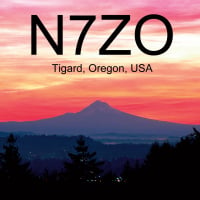Welcome to the FlexRadio Community! Please review the new Community Rules and other important new Community information on the Message Board.
Need the latest SmartSDR or 4O3A Genius Product Software?
SmartSDR v4.1.3 | SmartSDR v4.1.3 Release Notes
SmartSDR v3.10.15 | SmartSDR v3.10.15 Release Notes
The latest 4O3A Genius Product Software and Firmware
SmartSDR v4.1.3 | SmartSDR v4.1.3 Release Notes
SmartSDR v3.10.15 | SmartSDR v3.10.15 Release Notes
The latest 4O3A Genius Product Software and Firmware
If you are having a problem, please refer to the product documentation or check the Help Center for known solutions.
Need technical support from FlexRadio? It's as simple as Creating a HelpDesk ticket.
Need technical support from FlexRadio? It's as simple as Creating a HelpDesk ticket.
15 W SDR

Richard McClelland, AA5S
Member ✭✭
There's been some discussion on this board about a possible QRP 6xxx series radio and how it should be positioned in the market. Here's a 1999 Euro 15 W SDR. http://sunsdr.eu/product/sunsdr2pro/ It appears that there is a market for a QRP SDR in the $2k price range (but who knows how many they are selling?)
0
Comments
-
As much as I would like to see this, my guess is that most of the cost of the $2500 for the 6300 is the A-D, D-A, DSP and computer processing chips, and a small percentage is in the RF Deck. So cutting a 6300 down to 10-15 watts might not save a lot of money. The Flex-1500 is so inexpensive because it doesn't contain expensive processing chips, but leaves all of the DSP & Mod/Demod to the computer running PowerSDR.
On the other hand, I would love to see a 6000 series built for 144/220/430/1200 MHz bands (Or at least 144/430) but my guess is that at this point the price would be prohibitive to the average user. It may be that a nice set of wideband transverters with appropriate switching network would be a better option.
Ken - NM9P1 -
I, actually, had a conversation on this subject with Butch, k4something. With a 6700 w/440 transverter or 6500 w/ so2r and 2m 70cm transverter, it would simply be a new control surface. We know what satellites are visible at any given qth. We know their Doppler shift. We know what mode they're in. If they are flying repeaters or linear inverting pass band the GUI can set the Flex in the correct confige to just be spot on. No new hardware required. That assumes you are referring to satellite operation. Doing that remotely would be interesting.1
-
I agree with Ken on this one.. Going QRP would not be a cost cutter of any major degree due to the cost of the FPGA unit and other tech.. Why not just turn a 6300 down to tx 5w?
1 -
In my mind, the argument for such a beast is that the rig could have a better SCU and related components than what are available in the 6300 for the same price as the 6300 since the PA wouldn't be included.
0 -
Depending upon uplink/downlink requirements in the Transverter input, it might not even be necessary for the 6500 to use a SO2R box, simply use Transverter output for the uplink, and RXA for the downlink and you can have full duplex satellite operation with the FDX function turned on.
On my TX Audio Tutorial Videos, I was doing FDX on the same frequency with transmit set to XVTR and the receive on RXA, or ANT1 and had no overload problems. But when I started transmitting out of ANT1 or ANT2 with more than about one watt, I started having problems close in to the same frequency.
When they finally get a high altitude Phase 3 or Geosync Bird up, I will be investing in a good transverter and receive downconverter combo for satellite operation. Until then, I am saving my money for other projects.
(Now if I could come up with a schematic for my Ten-Tec 2 to 10 transverter, I would convert it to transverter power drive level input. But I haven't found one yet.)
Ken - NM9P1 -
That's the other thing I was telling Butch, the amsat dl p3d is on its way to Virginia Tech. So another AO HEO may be forthcoming!!! I believe I'll do that GUI this spring/summer as I already have the keplarian software ready. It, of course, will also be cross platform as well. It also raises the priority of it own in app subscription because Google's in app licensing is not Apple's and there is none, that I know of for Linux and Windows. This is not about 15w 6000. But on that subject, why not just set power out on the 6x00 to 15w?0
-
I personally would love a 145/440 Mhz add on for the Flex 6000 series.
1 -
I too would like a small QRP 6xxx radio and would pay prices close to a 6300 for it knowing that the cost is not in the power but the FPGA and other factors. I would want the money that would go towards a PA be used to make it power friendly and small. Unfortunately, I do not think the rest of the ham market would "get it" for being so expensive and compare it to other much cheaper QRP alternatives regardless if it's superior.2
-
Hi Salvador,
I have to agree. A single box 2m/70cm add-on for the 6000 series would be great. It might have to be stuffed differently for the 6700 vs the 6500/6300, but if was properly integrated and could act just like native VHF/UHF with switched pre-amp power out, internal switching for cross band work both ways, adequate power on both bands, proper CAT support, and such, I would be the first to buy it. I am still hoping to get rid of my IC-810H, but today the Flex radios just fall a bit short of the IC-810H's ease of use for satellite work.
73, Bob, N7ZO0 -
Now that we're dreaming, how about a QRP 7xxx with equivalent to top end receiver performance than can be paired with a second QRP 7xxx for two SCUs? Throw in an out-board amplifier to have a QRO version of a hypothetical Flex 7700. That would be a very flexible setup for those who could swing the cost. Getting SmartSDR to recognize the two units and operate them seamlessly as a single combined unit might be challenging :-)
0
Leave a Comment
Categories
- All Categories
- 378 Community Topics
- 2.1K New Ideas
- 630 The Flea Market
- 8.2K Software
- 118 SmartSDR+
- 6.4K SmartSDR for Windows
- 183 SmartSDR for Maestro and M models
- 430 SmartSDR for Mac
- 271 SmartSDR for iOS
- 258 SmartSDR CAT
- 193 DAX
- 382 SmartSDR API
- 9.3K Radios and Accessories
- 38 Aurora
- 257 FLEX-8000 Signature Series
- 7.2K FLEX-6000 Signature Series
- 947 Maestro
- 56 FlexControl
- 865 FLEX Series (Legacy) Radios
- 924 Genius Products
- 463 Power Genius XL Amplifier
- 336 Tuner Genius XL
- 125 Antenna Genius
- 297 Shack Infrastructure
- 209 Networking
- 460 Remote Operation (SmartLink)
- 144 Contesting
- 787 Peripherals & Station Integration
- 139 Amateur Radio Interests
- 1K Third-Party Software




